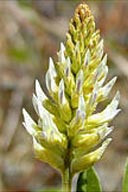 Loading... Please wait...
Loading... Please wait...- Home
- SEEDS
- SEED MIXES
- BUY PLANTS
- Info Request
-
Educational Videos
- Greenhouse Transplanting Demonstration
- Native Seed Cleaning demonstration at Ion Exchange Native Seed and Plant Nursery
- Attracting Butterflies
- Bidens - Bidens cernua Harvest Video
- Big Blue Stem Harvest
- Butterfly Milkweed Video
- Button Blazingstar - Liatris aspera Video
- Buttonbush - Cephalanthus occidentalis Video
- Canada Anemone - Anemone canadensis Harvest Video
- Cardinal Flower - Lobelia cardinalis Video
- Control Burn - Wildflower Field
- Cream Gentian - Gentiana flavida
- Culver's Root - Veronicastrum virginicum Video
- Cup Plant - Silphium perfoliatum Video
- Dormant Seeding | Planting
- Earthyman's Favorite Wildflowers Video
- Eco-Friendly Golf Course Seed Mix
- Floating Islands
- Fringed Loosestrife - Lysimachia ciliata Video
- Giant Yellow Hyssop - Agastache nepetoides Video
- Indiangrass - Sorghastrum nutans Video
- Iowa Prairie Partner Program
- Leadplant - Amorpha canescens (Potted) Video
- Meadow Blazingstar - Liatris ligulistylis
- Midland Shooting Stars - Dodecatheon meadii Video
- Native Plant Nursery Field Irrigation Experiment
- Nodding Onion - Allium cernuum Video
- Ohio spiderwort - Tradescantia ohiensis Video
- Old Man's Beard - Clematis virginiana blooms Video
- Oxeye Sunflower - Heliopsis helianthoides Video
- Prairie Spiderwort - Tradescantia bracteata
- Purple Coneflower - Echinacea purpurea Video
- Rain Garden or Water Garden Video
- Rattlesnake Master - Eryngium yuccifolium Video
- Riverbank Stabilization - Wetland Plants
- Rose Mallow - Hibiscus militaris Video
- Rosinweed - Silphium integrifolium Video
- Royal Catchfly - Silene regia
- Showy Tick Trefoil - Desmodium canadense Video
- Sneezeweed - Helenium autumnale Video
- Swamp Betony - Pedicularis lanceolata Video
- Swamp Milkweed - Asclepias incarnata Video
- Sweet Blackeyed Susan - Rudbeckia subtomentosa Video
- Tall Coreopsis - Coreopsis tripteris Video
- Urban Butterfly Garden
- Wild Bergamot - Monarda fistulosa Video
- Wild Geranium - Geranium maculatum Harvest
- Wild Goldenglow - Rudbeckia lanciniata Video
- Wild Petunia - Ruellia humilis Harvest Video
- Woodland Knotweed - Polygonum virginianum Video
- Yellow Coneflower - Ratibida pinnata Video
- Blog
- Resources
- Policies
Contact Us
Phone:
563-419-0837
or 563-535-7231
Email:
hbright@ionXchange.com
Browse Products
Add to Wish List
You Recently Viewed...
Our Newsletter
Product Description
"Licorice root, American Licorice, Sweet Wood"
Glycyrrhiza is from the Greek word glycys meaning "sweet" and rhiza meaning "root". Lepidota means "scaly".
| Sun Exposure | Prairie, Savanna |
| Soil Moisture | Wet Mesic, Mesic, Dry Mesic, Dry |
| Bloom Time |
Summer June, July |
| Bloom Color | Cream |
| Max Height | 2 feet |
| Wetland Code | FACU- |
| Germ Code | A,H, I |
| Seeds Per Packet | 75 |
| Seeds Per Ounce | 3,900 |
Common plant to the Great Plains and Prairies and outward to both coasts. Yellow-white, alfalfa-like flowers bloom from May to August . Wild Licorice loves disturbed areas like railroad right-of-ways and roadsides. Can reach 3 feet; stem is covered with tiny sticky hairs. There is more to this plant below the ground than above - the widely-spreading roots can reach down more than 5 feet.
An extract made from the roots of Wild Licorice has been used as an expectorant. Early settlers used a decoction from the roots to treat fevers in nursing Mothers. The Blackfoot tribe made a tea from the leaves and drank it to treat earaches. Wild licorice was also used as a purgative, as an agent to aid blood-clotting and as a treatment for inflamed mucous membranes and stomach ulcers.
The root was quite popular with Native Americans who chewed it raw or rasted in ashes. Early settlers also chewed the root raw and used it to flavor medicine, candy, root beer and chewing tobacco.
Edible Uses: Root - raw or cooked. Long, sweet and fleshy, when slow roasted they are said to taste like sweet potatoes. They can be used as a flavouring in other foods and can also be chewed raw as a masticatory, making an excellent tooth cleaner and also very good for teething children. The root contains 6% glycyrrhizin, a substance that is 50 times sweeter than sugar.
The tender young shoots can be eaten raw in the spring.
Medicinal Uses: American liquorice was widely employed medicinally by a number of native North American Indian tribes who used it in the treatment of a range of diseases. All parts of the body are medicinal, but the roots are the most active part. This species has properties similar to other liquorices which are widely used medicinally, though this species is rather neglected in modern literature. An infusion of the root is used to speed the delivery of the placenta after childbirth, it is also used to treat coughs, diarrhoea, chest pains, fevers in children, stomach aches etc. It is also used as a wash or poultice on swellings. The chewed root is retained in the mouth as a treatment for toothache and sore throats. The mashed leaves are used as a poultice on sores.
The leaves have been placed in the shoes to absorb moisture.
Herbal Uses: Unknown












